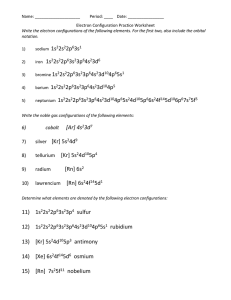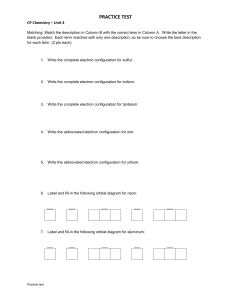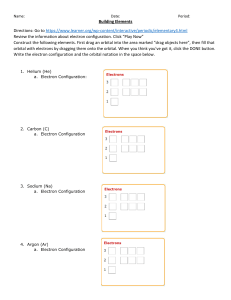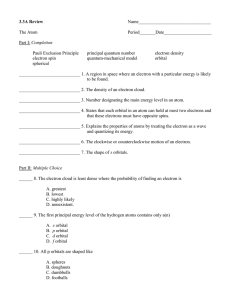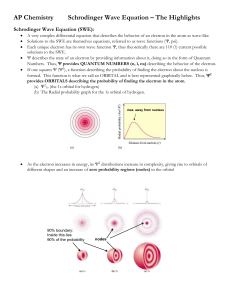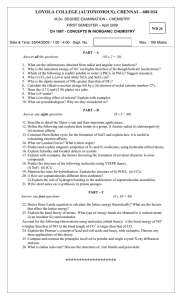Electron Arrangement Practice Problems
advertisement
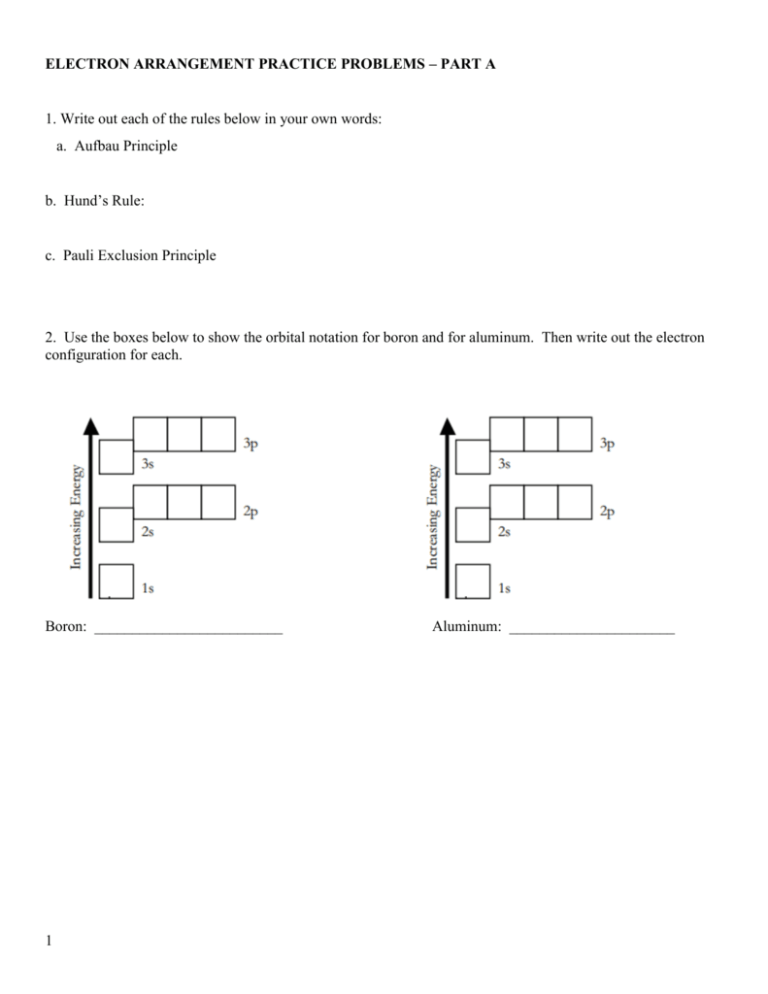
ELECTRON ARRANGEMENT PRACTICE PROBLEMS – PART A 1. Write out each of the rules below in your own words: a. Aufbau Principle b. Hund’s Rule: c. Pauli Exclusion Principle 2. Use the boxes below to show the orbital notation for boron and for aluminum. Then write out the electron configuration for each. Boron: _________________________ 1 Aluminum: ______________________ ELECTRON ARRANGEMENT PRACTICE PROBLEMS – PART B 1. Complete the chart below: Element 28 14𝑆𝑖 88 38𝑆𝑟 57 25𝑀𝑛 184 74𝑊 122 51𝑆𝑏 Electron Configuration (complete or abbreviated) Orbital Filling Diagram (complete or abbreviated) Electron Dot Diagram [Ne] 3s23p2 [Kr] 5s2 [Ar] 4s23d5 [Xe] 6s24f145d4 [Kr] 5s24d105p3 2. Which element in the chart above would you suspect to be an exception to the orbital filling pattern?_W____ 3. How many half filled orbitals does a manganese atom have? __5___________________________ 4. How many unpaired electrons does a nitrogen atom have? ___3__________________________ 5. How many electrons can fit in the fifth principle energy level? ____2n2_______________________ 6. What is the lowest principle energy level that has an “f” sublevel? ____4____________________ 7. How many orbitals are in an “f” sublevel? _______7____________________________________ 2 SCIENTIST MATCHING 1. G Developed the quantum mechanical model of the atom A. Thomson 2. A Experiments with cathode ray tubes led to the determination of the charge/mass ratio of the electron B. Bohr 3. F His Uncertainty Principle states that it is impossible to know both the velocity and position of a particle at the same time C. DeBroglie 4. B Developed the quantum mechanical model for hydrogen D. Einstein 5. E Proposed that energy is quantized E. Planck 6. D Photoelectric effect F. Heisenberg 7. C All moving particles have wave characteristics G. Schrödinger 3

